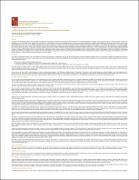| dc.description.abstract | The World Food Programme (WFP) is the United Nations (UN) agency responding to humanitarian emergencies by delivering food aid to vulnerable populations worldwide. The protracted insurgency in northern Uganda resulted in the
displacement of up to 1,619,807 people, largely women and children. The humanitarian situation among displaced persons in northern and eastern Uganda led to diminished coping abilities and increased food aid needs. Access to food through productive means varies but, on average, households can only access about 0.5– 0.75 acres of land. Recent nutrition and health assessments conducted in Pader District, in Feb 2004 and in Gulu District, in June 2004, highlight high mortality rates of more than 1 death/10,000 people/day. While Global Acute Malnutrition (GAM) rates appear to fall within the normal range expected within African populations (<5% GAM), high mortality rates consistently highlight the severity of the health situation in the camps. The WFP Uganda Country Office currently implements a Protracted Relief and Recovery Operation (PRRO) and a Country Programme (CP). The PRRO targets Internally Displaced Persons in Northern Uganda through General Food Distribution (GFD) activities, school children, HIV/AIDS infected and affected households and other vulnerable groups. In partnership with the Government of Uganda (GOU), sister UN agencies, international and national NGOs and Community Based Organisations, WFP currently assists the 1,619,807 Internally Displaced Persons, (IDPs), including 178,741 school children in the Gulu and Kitgum, 19,900 people infected with or affected by HIV/AIDS in Gulu and Kitgum and more than 750 food insecure persons involved in asset creation. Whilst WFP and other humanitarian actors continue to provide relief support to the displaced communities of northern Uganda, it is clear that without increased security the crisis will continue. | en_US |



